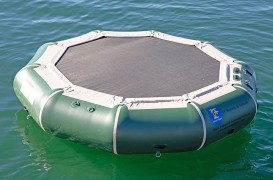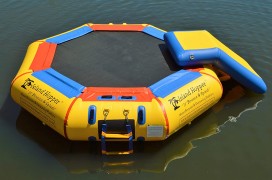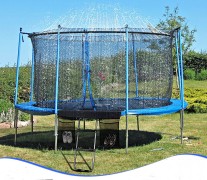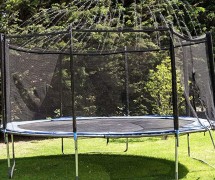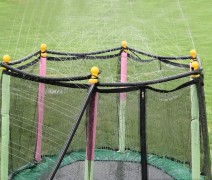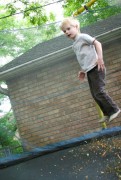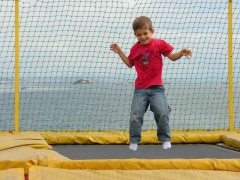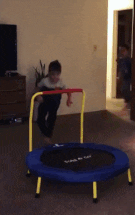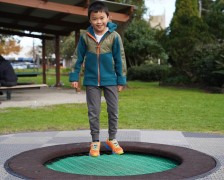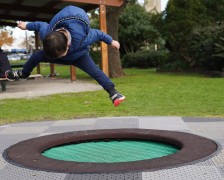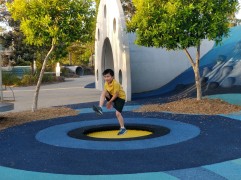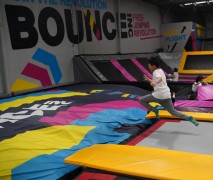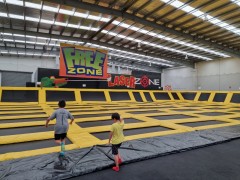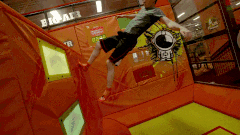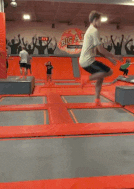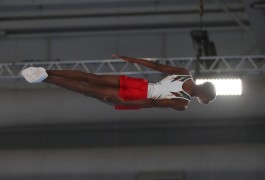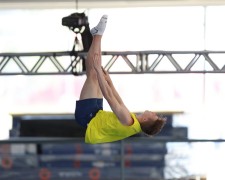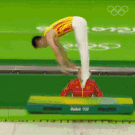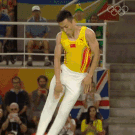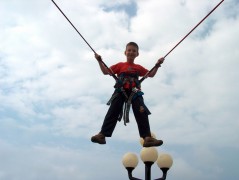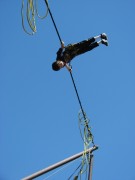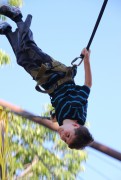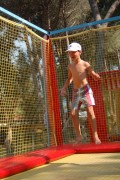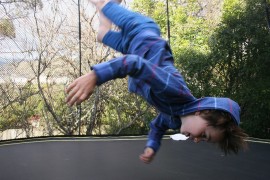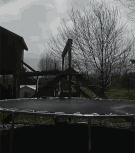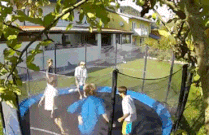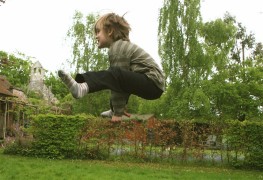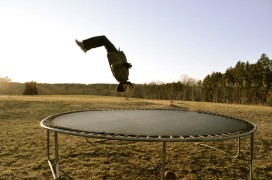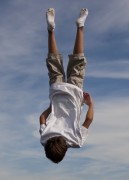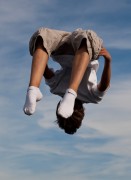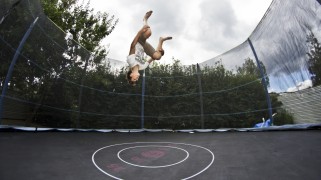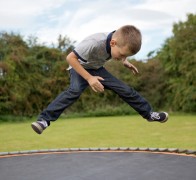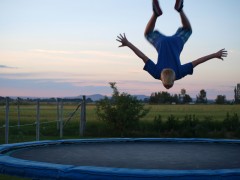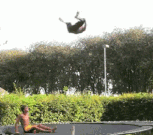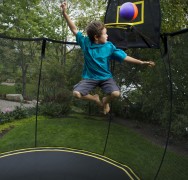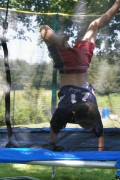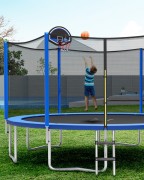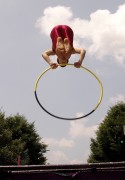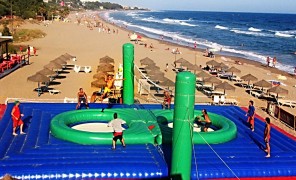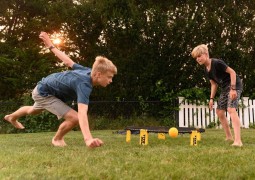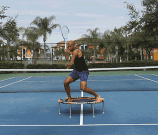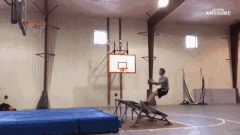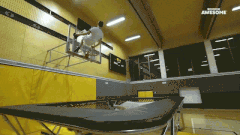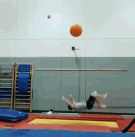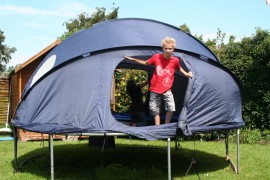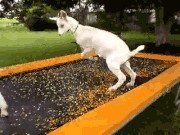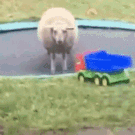 Trampoline
Trampoline
1) What Is A Trampoline ?
 A Trampoline Is A Rebound Device.
A Trampoline Is A Rebound Device.
 It Consists Of A Canvas Fixed By Springs Or Strings.
It Consists Of A Canvas Fixed By Springs Or Strings.
 They May Be Of Various Shapes, Most Are Circular, Rectangular Or Octagonal (eight Sides).
They May Be Of Various Shapes, Most Are Circular, Rectangular Or Octagonal (eight Sides).
 The Weight Lowers The Canvas, Which Causes An Extension Of All The Springs Followed By A Contraction Causing Propulsion Upwards.
The Weight Lowers The Canvas, Which Causes An Extension Of All The Springs Followed By A Contraction Causing Propulsion Upwards.
 The Trampoline Was Invented In 1930 By The American Gymnast George Nissen At 16 Years Old.
The Trampoline Was Invented In 1930 By The American Gymnast George Nissen At 16 Years Old.
 The Name Which Was The Commercial Mark Of The Inventor Comes From The Word Tramplin ("trampolín" In Spanish).
The Name Which Was The Commercial Mark Of The Inventor Comes From The Word Tramplin ("trampolín" In Spanish).
 Several Manufacturers Began To Produce Trampolines From The Late 1970s.
Several Manufacturers Began To Produce Trampolines From The Late 1970s.
 Jumping Build Confidence And Improved Strength.
Jumping Build Confidence And Improved Strength.
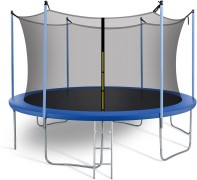

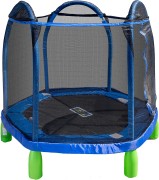
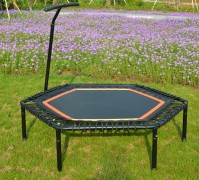
2) Mini For Indoors
 Mini-trampolines Measures About One Meter (39 Inches) Long And 30 Centimeters (12 Inches) High.
Mini-trampolines Measures About One Meter (39 Inches) Long And 30 Centimeters (12 Inches) High.
 They Are Sometimes Accompanied By A Stabilization Bar.
They Are Sometimes Accompanied By A Stabilization Bar.
 They Can Be Used For Fitness Exercices.
They Can Be Used For Fitness Exercices.
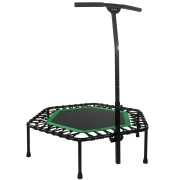

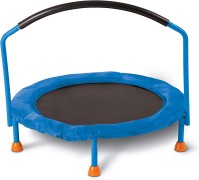
3) Outdoor Playground
 The Outdoor Playground Trampolines Are Integrated Into The Ground.
The Outdoor Playground Trampolines Are Integrated Into The Ground.
4) Parks
 A Trampoline Park Is A Place For Fun And Exercise.
A Trampoline Park Is A Place For Fun And Exercise.
 The Popularity Of Trampoline Parks Increasing Rapidly Worldwide During The 21st Century.
The Popularity Of Trampoline Parks Increasing Rapidly Worldwide During The 21st Century.
 Classes Given By Trainers Build Acrobatic Skills Learning Proper And Safe Techniques.
Classes Given By Trainers Build Acrobatic Skills Learning Proper And Safe Techniques.
 Special Zones With Accessories Can Be Offered To Diversify The Game Like A Foam Pool, Inflatable Structures Or An Obstacle Course.
Special Zones With Accessories Can Be Offered To Diversify The Game Like A Foam Pool, Inflatable Structures Or An Obstacle Course.
 A Wall Under A Platform Placed Next To The Trampoline Can Be Interesting For Freestyle And Run On The Wall.
A Wall Under A Platform Placed Next To The Trampoline Can Be Interesting For Freestyle And Run On The Wall.
 The Dodgeball Is A Team Sport In Which Players Try To Throw Soft Rubber Balls To Touch Opponents While Avoiding Being Touched Themselves.
The Dodgeball Is A Team Sport In Which Players Try To Throw Soft Rubber Balls To Touch Opponents While Avoiding Being Touched Themselves.
5) Gymnastics Competitions
 The First Trampoline World Championships Were Held In London In 1964 And Entered The Program Of The Olympic Games In 2000 With The Design Of An Olympic Trampoline.
The First Trampoline World Championships Were Held In London In 1964 And Entered The Program Of The Olympic Games In 2000 With The Design Of An Olympic Trampoline.
 An Athlete Can Bounce Over 8 Metres (26 Feet) In The Air.
An Athlete Can Bounce Over 8 Metres (26 Feet) In The Air.
 Bouncing Can Include Simple Jumps To More Complex Combinations Of Somersaults (the Body Rotating 360°).
Bouncing Can Include Simple Jumps To More Complex Combinations Of Somersaults (the Body Rotating 360°).
 Scoring Is Based On The Difficulty And On The Total Seconds That The Flight Lasts.
Scoring Is Based On The Difficulty And On The Total Seconds That The Flight Lasts.
 The Points Are Deducted When The Shape Is Imperfect And The Distance Increases With The Center Of The Bed.
The Points Are Deducted When The Shape Is Imperfect And The Distance Increases With The Center Of The Bed.
6) A Higher Bounce With Bungees
 The Player Of A Bungee Trampoline Is Equipped In The Basin With A Bundle Of Elastic Cords Connected To A Gantry.
The Player Of A Bungee Trampoline Is Equipped In The Basin With A Bundle Of Elastic Cords Connected To A Gantry.
 It Can Increases The Height Of The Jump Up To 10 Meters.
It Can Increases The Height Of The Jump Up To 10 Meters.
7) Safety
 Acrobatics On A Trampoline Can Be Dangerous.
Acrobatics On A Trampoline Can Be Dangerous.
 Children Jumping On A Large Trampoline Should Always Be Supervised By Adults. They Risk Muscle Strain, Sprains And Fractures Because Their Bones Are Soft.
Children Jumping On A Large Trampoline Should Always Be Supervised By Adults. They Risk Muscle Strain, Sprains And Fractures Because Their Bones Are Soft.
 A Protective Pad On The Edge Of The Trampoline Fully Covers The Frame, Hooks And Springs To Prevent Falls.
A Protective Pad On The Edge Of The Trampoline Fully Covers The Frame, Hooks And Springs To Prevent Falls.
 A Net Avoids Overflow Outside The Trampoline.
A Net Avoids Overflow Outside The Trampoline.
 Having Some Training In A Gym May Be Beneficial In Alerting People To Possible Hazards And Provide Techniques To Avoid Bad Falls.
Having Some Training In A Gym May Be Beneficial In Alerting People To Possible Hazards And Provide Techniques To Avoid Bad Falls.
 Be Careful About The Weight Limits Recommended By The Manufacturer. A 3.6 Meters (12 Feet) Round Trampoline And A 5 Meters (16 Feet) Rectangular Trampolines Usually Supports Up To 160 Kilograms (350 Pounds).
Be Careful About The Weight Limits Recommended By The Manufacturer. A 3.6 Meters (12 Feet) Round Trampoline And A 5 Meters (16 Feet) Rectangular Trampolines Usually Supports Up To 160 Kilograms (350 Pounds).
 One Common Sources Of Injury Is When Multiple Users Are Bouncing On The Trampoline At One Time, Many Suffer Broken Bones As A Result Of Bad Landing After Knocking Into Another User.
One Common Sources Of Injury Is When Multiple Users Are Bouncing On The Trampoline At One Time, Many Suffer Broken Bones As A Result Of Bad Landing After Knocking Into Another User.
 In Some Cases, People Who Perform Somersaults Without Proper Training Land On Their Neck Or Head, Which Can Cause Paralysis Or Even Death.
In Some Cases, People Who Perform Somersaults Without Proper Training Land On Their Neck Or Head, Which Can Cause Paralysis Or Even Death.
 A Burn May Occur When Your Skin Rubs Across The Rough Fabric.
A Burn May Occur When Your Skin Rubs Across The Rough Fabric.
8) Movements You Can Learn
 Trampoline Movements Improve Your Flexibility And Coordination Skills.
Trampoline Movements Improve Your Flexibility And Coordination Skills.
9) World Records
10) Multi-sport
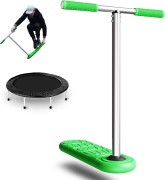
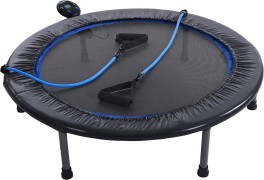
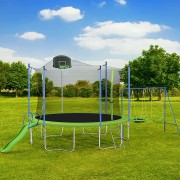
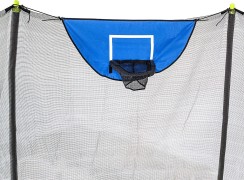
11) In The Night

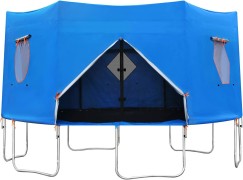

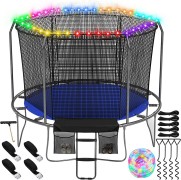
12) Animals Bouncing
13) With Water
